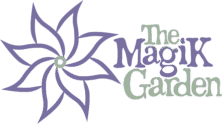Please note that some of the links in this post are affiliate or referral links as indicated, and if you make a purchase or sign up for a service within a certain timeframe after clicking on one of those links, I may earn a small commission paid by the retailer at no extra cost to you. I wouldn’t recommend anything that I don’t or wouldn’t use myself. Thank you for your support!
A Native Fairy Garden changes how we perceive native gardening
A native fairy garden is such a fun way to play around with native plants. It’s also a great way to introduce children to native gardening. It’s one of my favorite gardening trends, and has been for a very long time. This is a wonderful way to expand how we perceive native gardening.
You have my permission to play with your native garden. You are allowed to experiment, rearrange, plant things next to one another, and move things around. You’re allowed to add, edit, and remove plants that aren’t working for you. You’re allowed to create your own themes, or adapt existing themes. Grow a bog in a kiddie pool or a bath tub. Create a secret garden hidden behind thickets. Plant a native fairy garden in a galvanized tub, like this one.
Native Gardening is not Habitat Restoration
There seems to be a belief that native gardening has to look like the natural world in order to be ecologically effective. That’s not true at all. Gardening is not natural habitat restoration. You can create a garden that supports a natural habitat, but a garden is its own thing, and that’s okay. We need to remember that even what we thought was wild was cultivated by humans. I think what we need is a scale to better visualize the scope of native gardening.

I’ve noticed that the perception of what native gardening must look like is one step above completely wild. The fact is, all plants used in gardens are native somewhere. Traditional horticulture is just native gardening in an exotic land. We don’t have to abandon our sense of design and aesthetics to incorporate native plants. All we’re doing is paying attention to where the plants we use originated.
The native fairy garden design
This native fairy garden is situated inside a large galvanized tub I picked up at a flea market. If that’s not an option, you can get them brand new online. Something like this bushel basket (affiliate link) would work well for this project. The reviews say it’s leaky, which is fine. You’ll actually want to drill out additional drainage holes in the bottom. It’s a fairy garden, not a fairy bog after all. A fairy bog would be fun, and I may try that in the future. …adds “design a fairy bog” to her to-do list, or would that be a “goblin bog?” Yes, a goblin bog!
Once you’ve drilled out holes, add your native garden soil to the tub. If you live in an apartment, grab a bag of garden soil, not potting mix. This is a long-term outdoor situation, not a nursery pot. If you’re like me, you’ll want to leave a few inches of space from the top of the container. This gives it an enclosed look, and holds in leaves in winter (which protect your plants). If you live in the city and have no way of transporting a 40lb bag of soil, you can get this online as well (affiliate). While I wouldn’t suggest shopping online for these things, I’ve lived in the city without a car. Being able to order these things would’ve been helpful.
Native Plant Selection
Sedum glaucophyllum
This is a rare, native sedum endemic to the Appalachian mountains bordering Virginia & West Virginia. This sedum stays very small. It has not spread much in the two years it’s been growing in this pot. This makes it ideal for native fairy gardens.
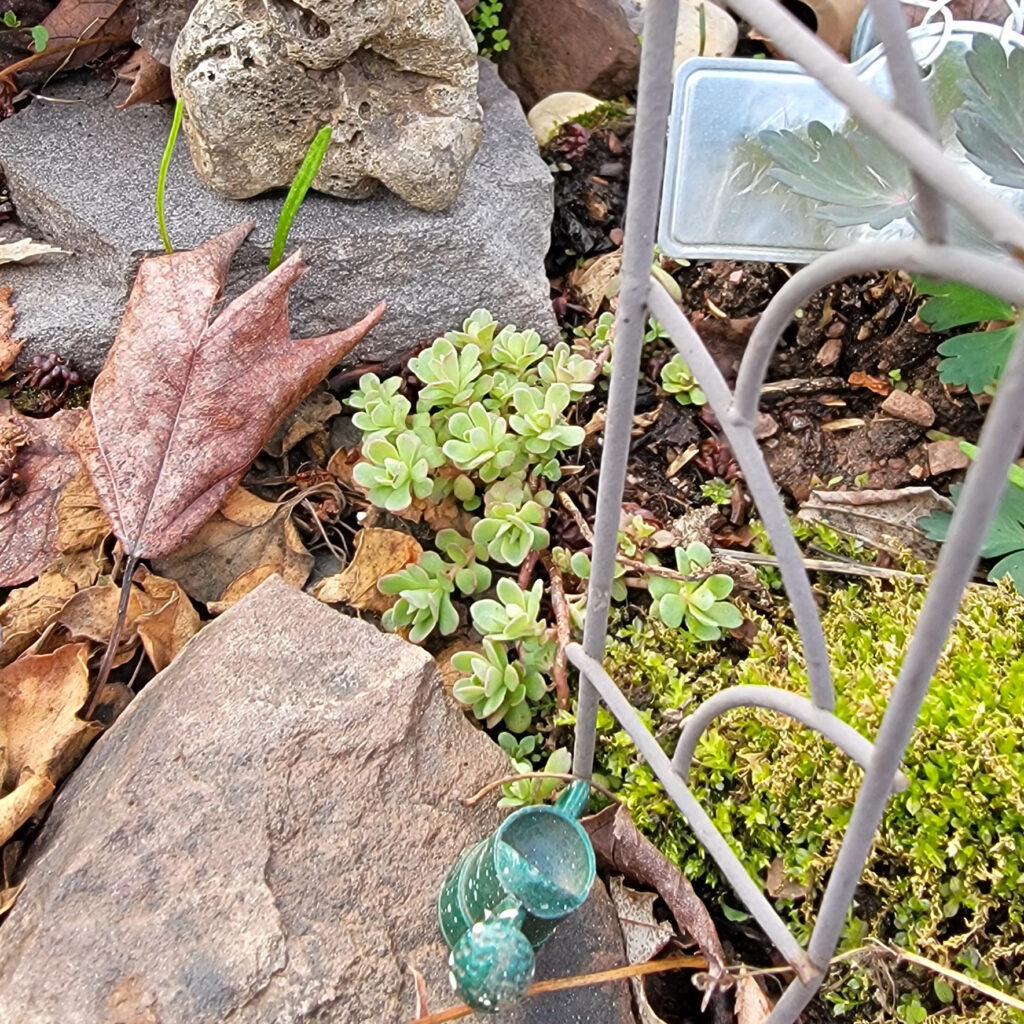

Aquilegia canadensis
‘Little Lanterns’
This is a dwarf selection of our native eastern columbine. The native wild species is capable of growing quite large and would overtake this pot. The dwarf species remains on the small size, better suited for a native fairy garden.
Viola walteri
‘Silver Gem’
This is an adorable violet selection with purple/green leaves with a light coloration. It does spread overtime, but fairly slowly. In a few years it should fill in the bottom of the container as a groundcover. Any of the smaller violet species would work well in a native fairy garden.
Erythronium spp.
I think this might be Erythronium albidum, but could be one of the others. Trout lilies take up minimal space so they work well in this container.
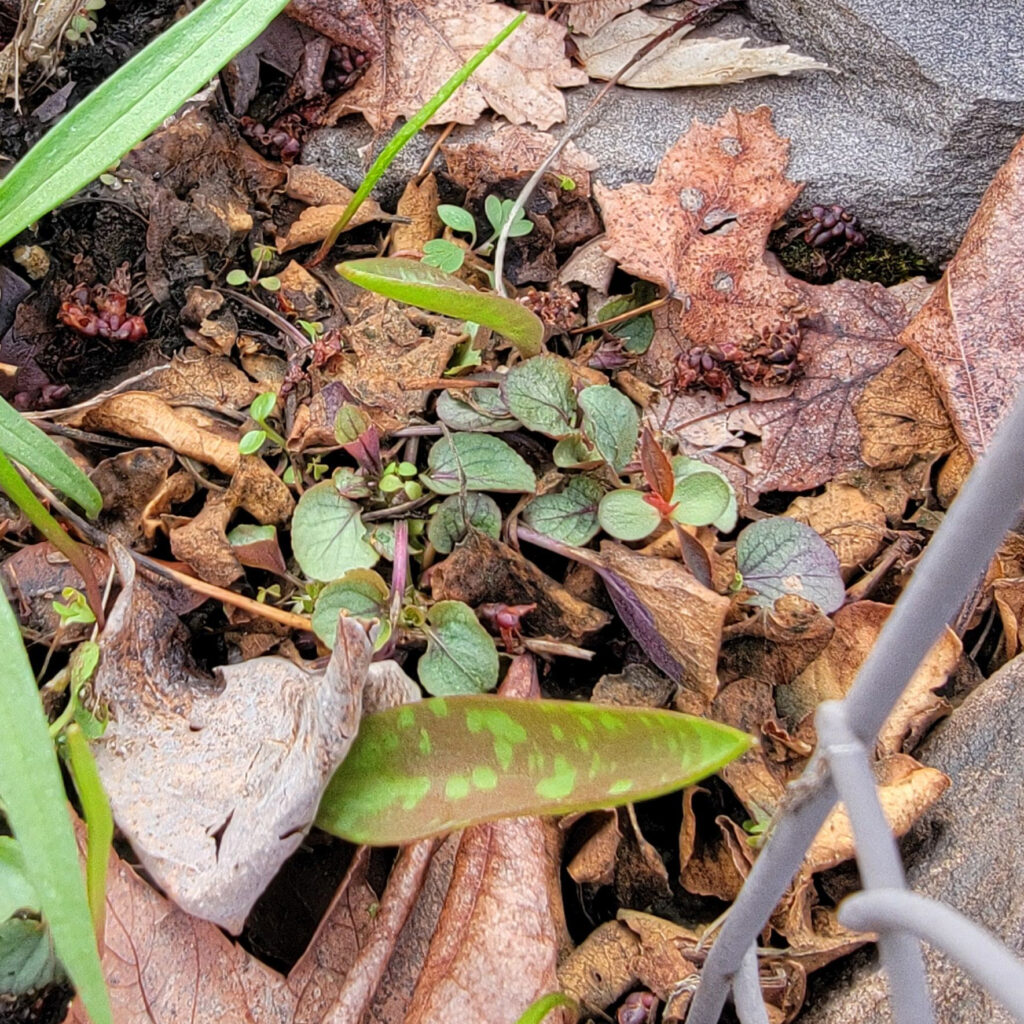
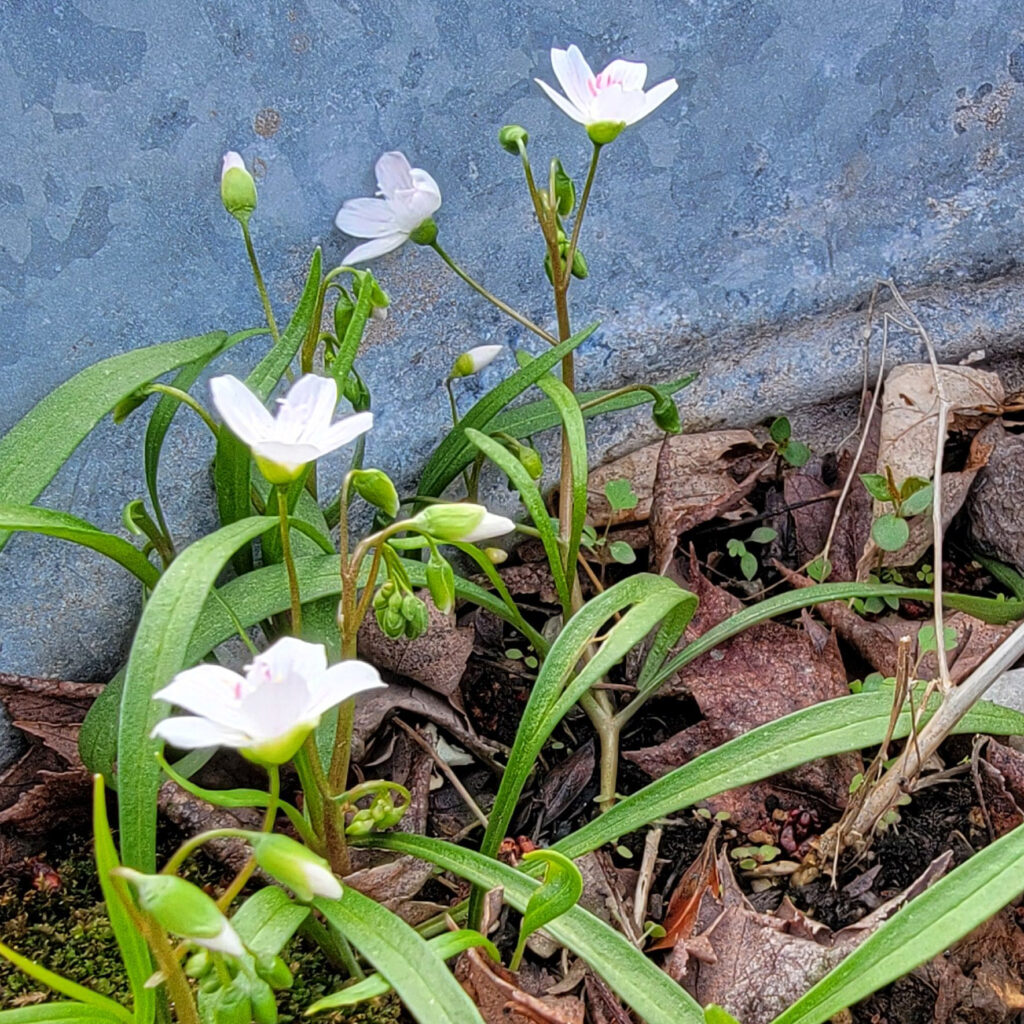
Claytonia virginica
I don’t remember if I added this to the fairy garden intentionally, or if it volunteered. These grow all over my property and pop up in the wildest places.
Capnoides sempervirens
You may see little seedlings growing all over the fairy garden. Most are rock harlequin, which is a native annual/biennial. As the ephemerals here go dormant, they will fill in.
Cheilanthes lanosa
Hairy lip fern isn’t the most appealing name for a fern. This is a drought-tolerant, sun-tolerant evergreen fern that is popular in rock gardens. I have the fairy garden in a location that gets full-part sun. It doesn’t get watered, so whatever grows here needs to survive natural conditions. This one is several years old and keeps getting bigger, so I think it’s happy.
Native mosses
I didn’t bother figuring out which mosses are in here. You can find mosses anywhere. Scrape some up and add them to your native fairy garden. No fairy garden is complete without moss.
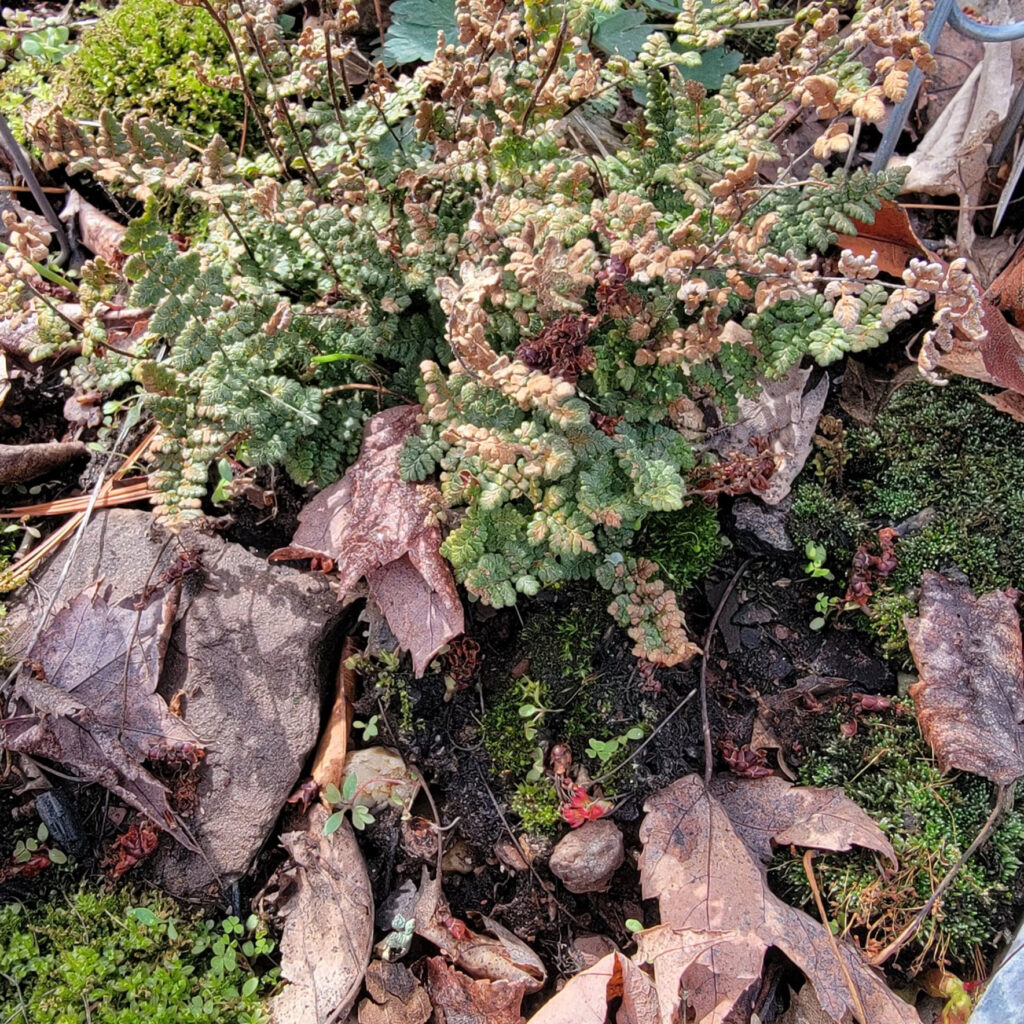
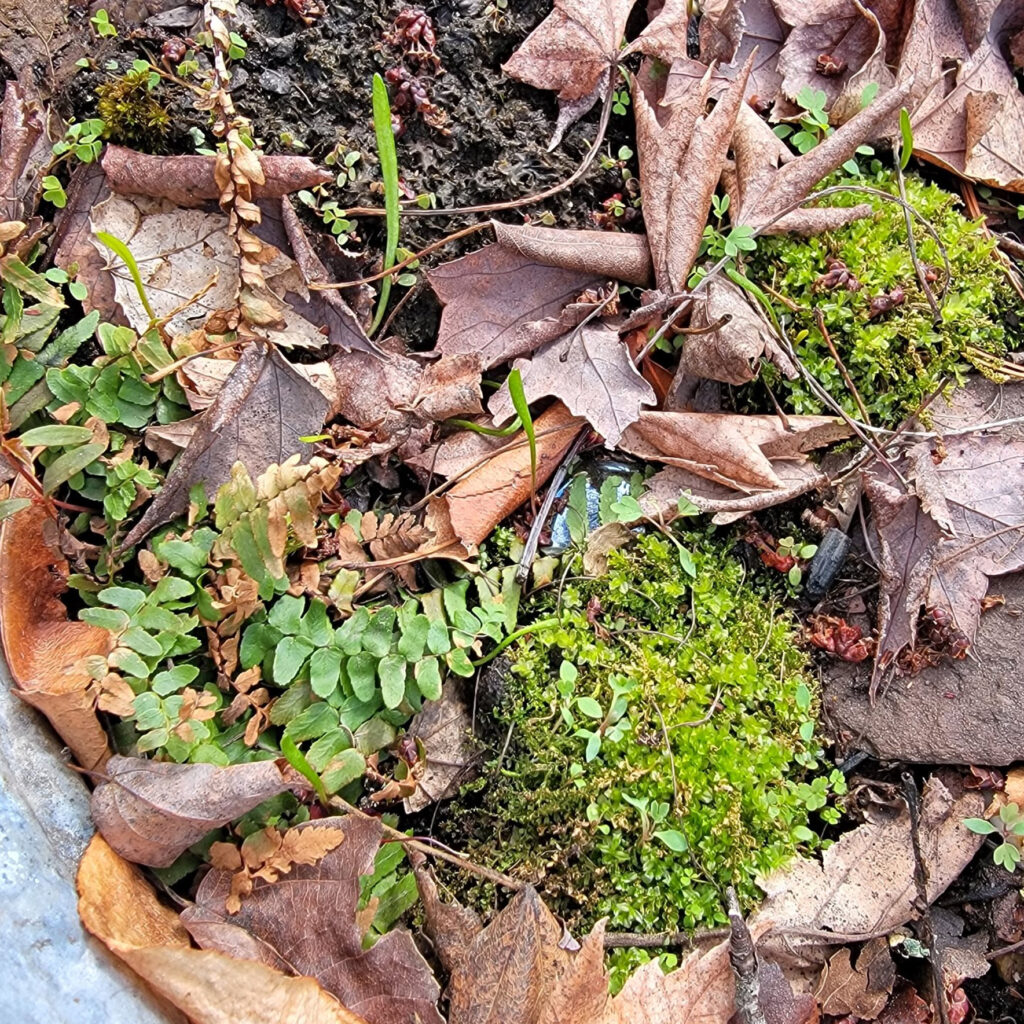
Asplenium platyneuron
Ebony spleenwort is the newest addition to my native fairy garden. The garden itself I’ve had for close to 10 years. It started out with a trident maple bonsai, which died during a drought a few years ago. I pulled it out, filled in the empty spot with more soil and mosses, and slowly added native plants.
You could add a native shrub and train it as a bonsai. I’m considering trying this with a miniature mountain laurel, or with Hypericum kalmianum. The latter, Kalm’s St. John’s wort, will be added to the shop soon, so keep an eye out.
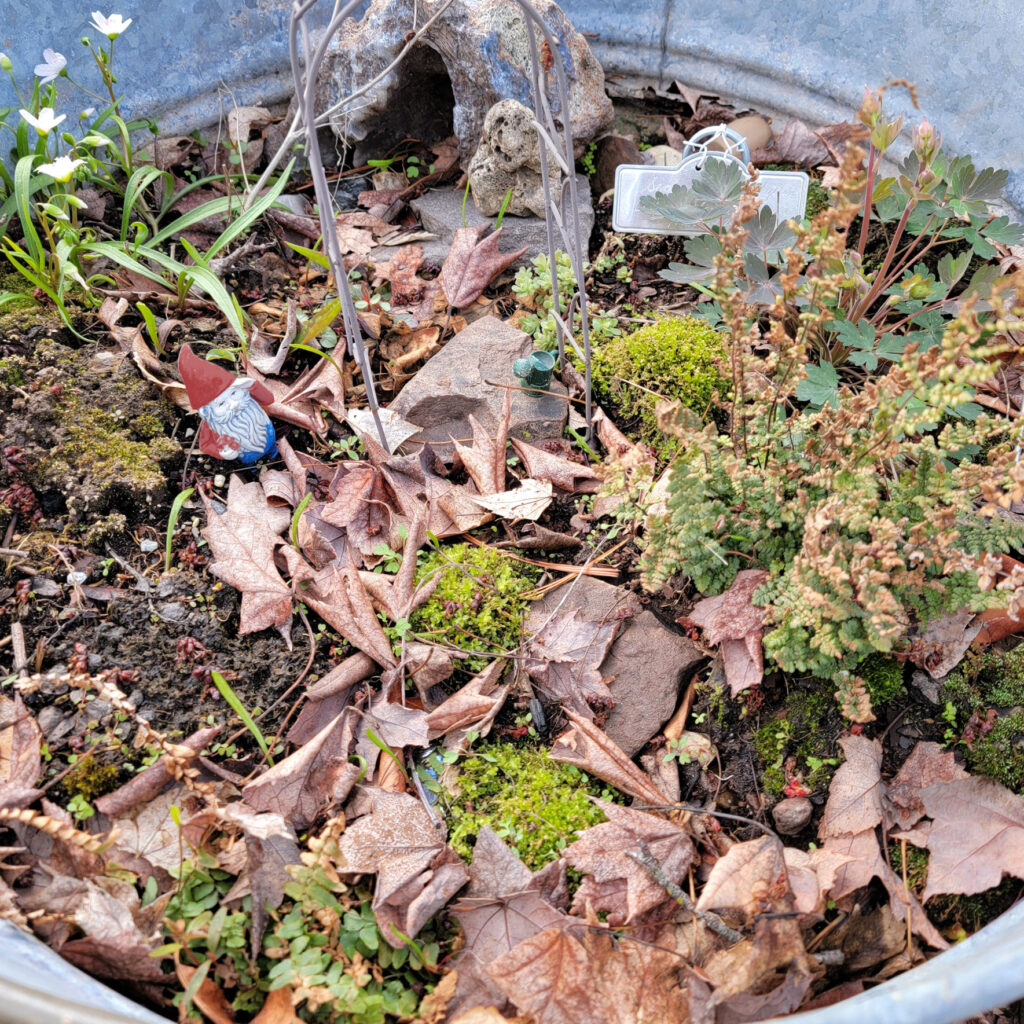
This sits outside in the garden year-round. Even though I have an entire yard to garden, playing in the native fairy garden reminds me of childhood. I’ll pick out the leaves, tidy things up, snip off dead or decaying leaves. This still needs its spring cleaning done. While doing so, I’ll prick out some Corydalis sempervirens to pot and add to the shop.
Decorative objects
Since fairy gardening is more popular among gardeners, many stores sell tiny objects to decorate them. The gnome, watering can, arbor are really the only objects I have now. There were other things I think got buried (like garden tools, just like real life). I find I like a more natural look, so I’ll add rocks I’ve dug up or found on hikes. I’m not sure where the “crystal cave” came from – we’ve had it as long as I can remember. I found the old grandmother stone while visiting Jim Thorpe a few years back. That’s the one sitting in front of the cave. There is a ceramic owl I normally put on top of the cave. That was probably knocked over during winter.
Just like gardening, a native fairy garden is a journey. It will change from year to year. It had a tree that died and was replaced with other plants. Some things get lost or buried, and new things pop up. There’s no rush to having the perfect fairy garden set-up from the start. My suggestion would be to keep your eyes open in your travels. You may find something on a nature walk, or the thrift store, or a souvenir that you’d like to add. Maybe you like to make things, and you can design structures for it.
The only thing I’d recommend is a pair of large tweezers or tongs, like the ones I have (affiliate). I use these for all manner of things, especially for pricking out seedlings. This is easier for weeding in tight spaces where you don’t want to disrupt other things. I’ll probably make a separate post about the tongs in the future, because I use these all the time.
